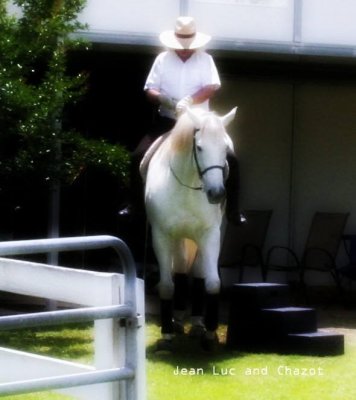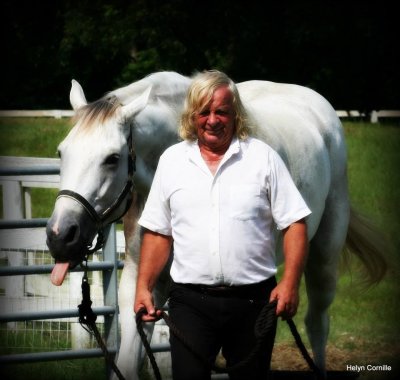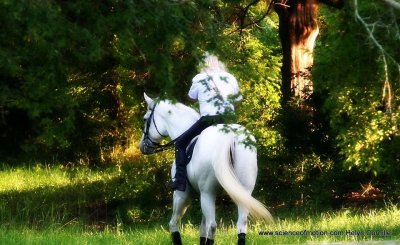Foward Up
Forward up

Chazot travels with a long neck when we go out for a walk or when he rests after work. But the trunk is not down between the forelegs. He does not travel forward down; he travels forward up. He carries himself. He does not overload his forelegs. He maintains efficient locomotion in the sense that the front legs travel within their range of efficiency. As they are not overloaded, the tendons, aponeurosis, fascia store, and reuse elastic energy. The elastic energy stored in and recovered from tendons during cyclical locomotion can reduce the metabolic cost of locomotion (Cavagna et al., 1977; Alexander, 1988; Roberts et al., 1997). If ask for an easy trot, he trots with the same long and free neck, but he bounces his trot. He reduces the metabolic cost of locomotion, storing and recovering the elastic energy store in his tendons, fascia, and aponeurosis. Ease is efficiency, and efficiency is elastic energy.
If I ask him, ”do you stretch your upper neck muscles?” here is his response.

Of course, he does not. Gravity is pulling his head and neck down, and he has to use his upper neck muscles to resist gravity. His nuchal ligament helps, as the ligaments participate in the carriage of the neck. However, even if the muscles work less due to the support of the nuchal ligament, they still have to resist the attraction of gravity that is pulling the head and neck down to earth.
Do I feel his back “stretch” when he walks free on long reins? If that is what I want to believe, I would describe the “stretching” of his back muscles. I would please my belief but would not describe my horse’s muscular work.

I feel the work of his back muscles, but that is not relaxation. His back muscles' primary function is to protect his thoracolumbar column from a range of movement that would exceed the thoracolumbar column's possible range of motion. It is a work of supple resistance. There is a very large elastic-stiffness diversity in the back muscles.
He loves going for some long walk after work or in the middle of his work, but it is not stretching; it is tensegrity, which is a word composed of two words, tension, or subtle nuances in muscle tone, and integrity, nuances in muscle tone involving his body all at once.
Jean Luc


 twitter
twitter facebook
facebook google
google pinterest
pinterest yahoo
yahoo linkedin
linkedin